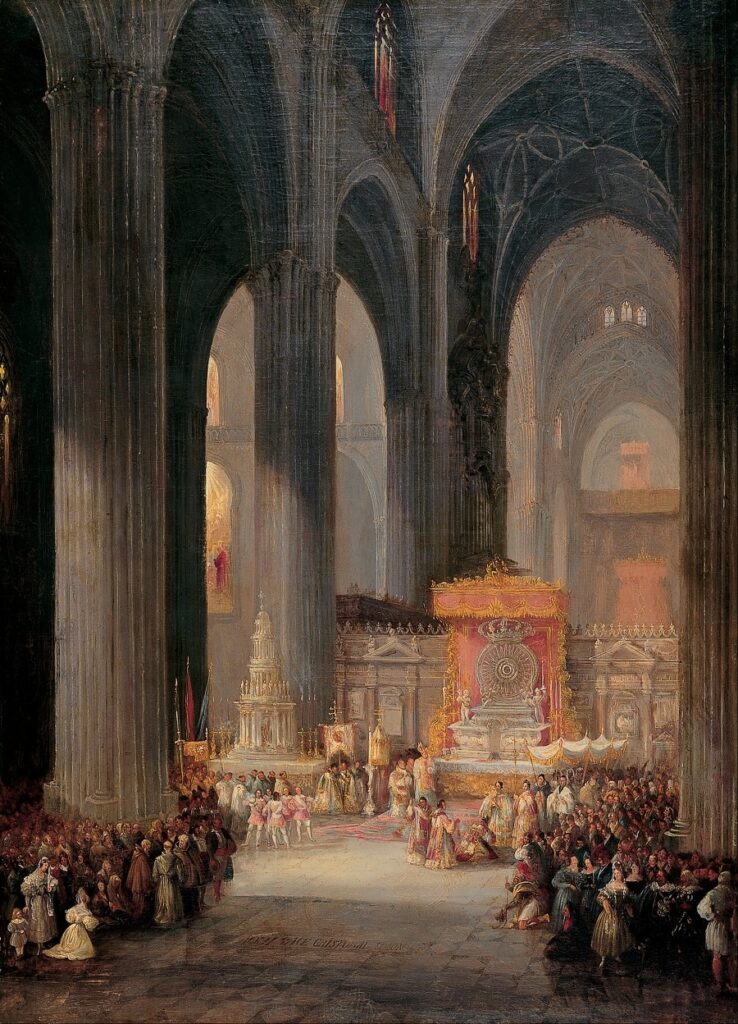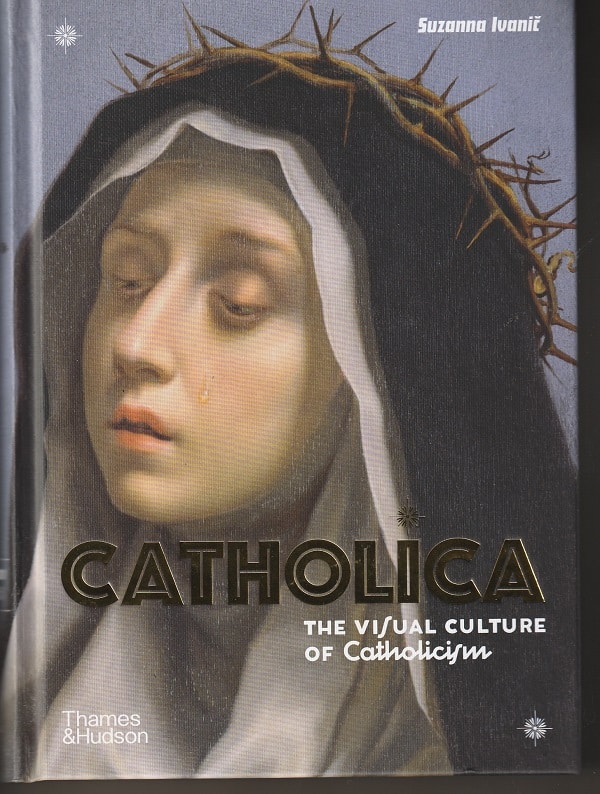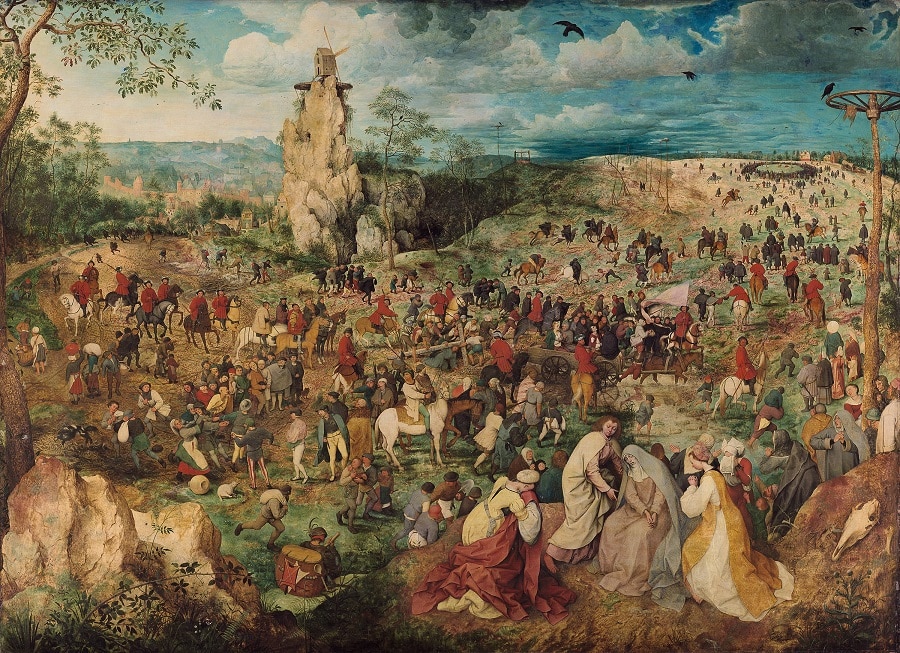Catholicism is a faith rooted in the senses. It is the smell of incense, the music of chant, the bright brilliance of stained-glass windows, the feel of chrism on the forehead and the taste of the Communion wafer on the tongue.
Although rooted in the Jewish Bible with its prohibition against images, the Catholic faith has used the feelings of touch, taste, smell, sound and sight to express and embody the intricate connection of the spiritual and the physical, the human and the divine.
As Suzanna Ivanic writes in her lively, stunning and beautiful 2022 book Catholica: The Visual Culture of Catholicism:
Catholic art is not just a by-product of religion. It is religion — just as much as the words of the Bible or the ritual of the Mass. Its visual and material forms are closely intertwined with Catholic beliefs, practices and identities…
The result is a stunning, and often surprising, range of works that speak both to the wonder of the Mass and to more intimate sensual forms of devotion. The central tenets of the faith and its symbols…are essential for an understanding of the religion, but so too are the awe-inspiring manipulations of light, color, smell and sound achieved in the name of God…

From Giotto to Chagall, from Rembrandt to Vermeer, from Michelangelo to Durer, artists have told the stories of the faith in works, large and small, many of which have been displayed in churches and served as a Poor Man’s Bible for illiterate believers down the centuries.

“Astonish the viewer”
As Ivanic’s subtitle indicates, her book emphasizes Catholic art that can be seen. It includes great paintings and prints of a humbler nature, even mass-produced.
In addition, her lavishly illustrated book includes images of sculptures and of the more everyday tactile elements of the faith, such as rosaries and chalices and kneelers and vestments. There are visual representations of other physical manifestations of belief — the distribution of Communion, for instance, and the clouds of incense smoke, the long line of a feast day procession and two monks singing the Daily Office.
Ivanic, an expert in early modern European history at the University of Kent, is especially attuned to the sensual impact of church structures, particularly cathedrals.
With their cavernous interiors, shafts of colored light and reverberating acoustics, cathedrals across the world set the imagination on fire. From Rome to Krakow, Cuzco and Goa, the cathedral is designed to astonish the viewer and glorify God, as well as help visitors meditate and pray in exalted devotion.
Above all it is the space performed — filled with the comings and goings of the ritual year — that brings the cathedral to life.

Riotous color to ethereal stillness
Although Catholica is filled with startling and intriguing images, it isn’t exactly an art book. Or not only an art book.

Ivanic writes that Catholica is a journey through Catholic art “from its symbols and iconographies to an appreciation of its use for devotion and glorifying God” with “a display of riotous color and exotic styles as well as ethereal stillness.” More informally, she describes the book at her university webpage as “a research-informed publication for designers, art junkies and the general public.”
Maybe the best way to think of it is as a primer on the visual and sensual aspects of Catholic religious expression. In other words, what these things have to say about the faith of the believers.
I’m certain that Catholica will be eye-opening for Catholics. For instance, I wonder how many members of the religion have thought about tattoos of Our Lady of Guadalupe as expressions of Catholicism or know the meaning of various items in, for instance, paintings of the angel Gabriel’s annunciation to Mary about becoming the mother of Jesus.
An overview of faith and expressions of faith
This is a work, however, that will be of even greater use to non-Catholics since it provides an overview of the religious faith as well as the sensual and physical expressions of those beliefs.
Ivanic divides her book into three sections: Tenet which has to do with theological, liturgical and clerical aspects of the faith; Locus which is about the places where faith is expressed, including the cathedral and the home; and Spiritus which focuses on how belief is expressed in private by individuals and in public by communities of believers.
Interspersed throughout these sections are double-page sidebars. About half look at certain aspects of the church culture, such as prayer and devotional jewelry. The others have to do with “decoding” the meaning of key stories or elements of Catholicism, such as decoding an image of the Last Judgement or decoding images of the crucifixion of Jesus at Calvary or decoding Lent.

The result is that Ivanic’s book is one of those rare reference works that not only conveys a great amount of detailed information in a pleasingly organized package but also a work that’s a joy to page through.
Patrick T. Reardon
4.6.23
Written by : Patrick T. Reardon
For more than three decades Patrick T. Reardon was an urban affairs writer, a feature writer, a columnist, and an editor for the Chicago Tribune. In 2000 he was one of a team of 50 staff members who won a Pulitzer Prize for explanatory reporting. Now a freelance writer and poet, he has contributed chapters to several books and is the author of Faith Stripped to Its Essence. His website is https://patricktreardon.com/.
